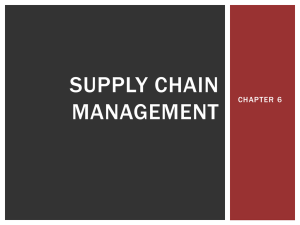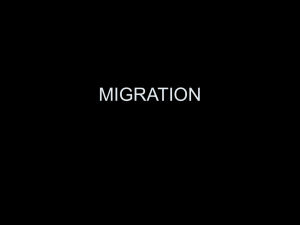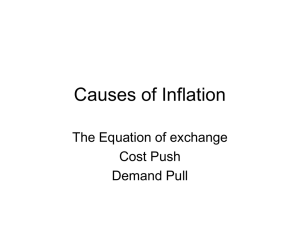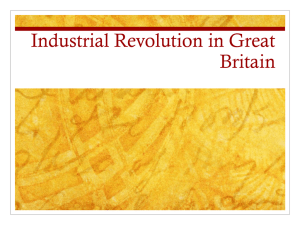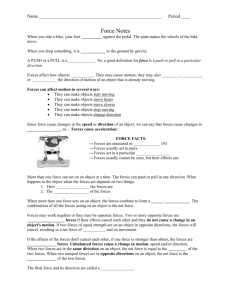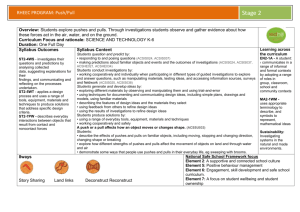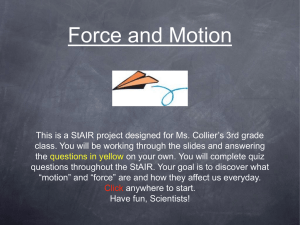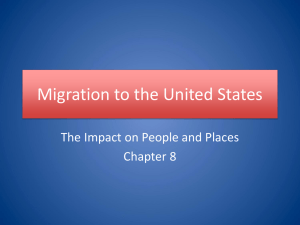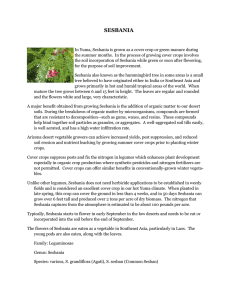Improved Push and pull technology is an environmentally friendly
advertisement
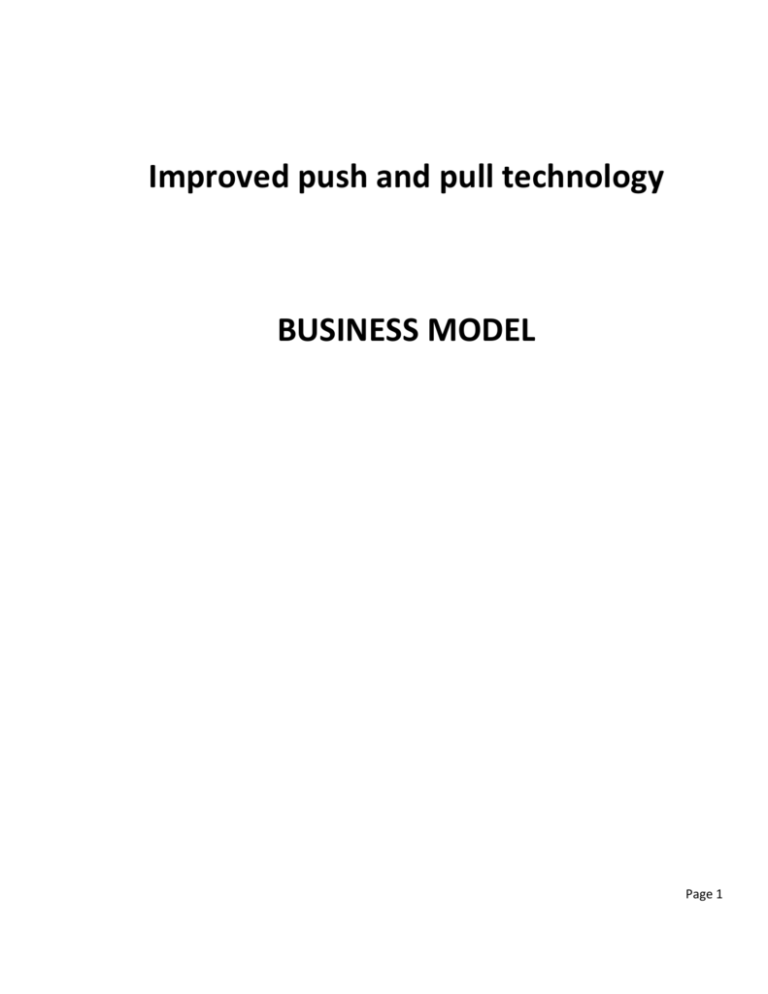
Improved push and pull technology BUSINESS MODEL Page 1 Executive Summary Improved Push and pull technology is an environmentally friendly technology that involves planting of crops without use of pesticides, herbicides nor other chemicals with an aim to address the problem of food insecurity. Improved Push and pull approach is naturally able to control striga weed, stem borer pests and declining soil fertility which are major constraints to cereal production in eastern Africa. Cereal farming in Eastern Africa contributes approx 50% of the GDP. However, stem borers & Striga weed continue to cause great harm to maize & sorghum and consequently reduce yields by 30-100% (Khan et al., 2008a).Eastern Uganda has the highest striga infestation in the country (Ebiyau et al., 1995) virtually affecting all the cereals grown (maize, sorghum, millets, and upland rice). The result is a vicious cycle of poverty, malnutrition and environmental degradation. This deteriorating situation calls for concerted efforts to manage this problem. Improved Push and pull technology comes as a viable solution to this perennial problem. The technology briefly involves planting of maize, and intercropped with silver leaf desmondium or molasses grass. Napier grass is then planted around the intercrops. Sesbania sesban trees are then planted on the border of the farm. The desmodium or molasses grass produces volatile chemicals which include (E)-ocimene and (E)-4,8dimethyl-1,3,7-nonatriene, (Turlings et al. 1990), which repel the stem borer moths from the maize (push) while those released by Napier grass attract and trap the stem borer moths (pull). The desmodium roots produce semiochemicals which stimulate Striga seed germination and inhibits their attachment with maize, thereby reducing Striga seed bank. A bare land is left between Napier grass and the intercropped crop silver leaf desimondium to act as a buffer zone. The Sesbania sesban trees and silver leaf desmondium are Legumes and improves soil fertility through nitrogen fixation. Both plants provide quality fodder for livestock. Sesban in particular is a good windbreaker and provides shade and support for other plant species (Heering et al., 1992). It provides green manure and its leaves produce rich compost (Cook et al., 2005). Sesban foliage is a protein-rich forage and phosphorus. Its crude protein content is generally above 22 % DM. on addition sesban gives quality fuel wood with less smoke and has a unique feature of regenerating after being cut. Page 2 Improved push and pull garden layout Improved push and pull technology involves planting of maize (Zea mays ) intercropped with silver leaf desmondium (Desmodium intortum). Two rows of Napier grass (Pennisetum purpureum) are then planted one meter away from the intercrops all round the farm. On the border of the farm, Sesbania sesban trees are then planted on the border of the farm. Border of the farm. Sesban legume planted at spacing of 2M apart Area for maize desmodium intercrop 1M bare land all round 75cm Two rows of Napier grass Stage of development of improved push and pull technology This technology through the support of Resilience Africa Network sponsored by USAID received a grant for proof of concept stage in 2015. The technology was successful set up in Buyanga sub county eastern region of Uganda which has the highest incidences of striga weed according to Uganda national survey. The technology showed a greater potential of addressing this perennial problematic weed and pests and significantly increased yield upto three times more. Because of its successes there is need to scale it up to other areas hence need for financial support. Page 3 Field photos of improved push pull crops in Eastern Region, Uganda Page 4 Plant species used Improved push and pull technology involves use of two legumes (sesbania sesban and desmodium), napier grass( Elephant grass) and maize crop that have significant market demand as well as being well suited for growth in Uganda. Sesbania sesban tree species is vital in fixing nitrogen in the soil, forage for animals, provision of firewood with less smoke among others; Silver leaf desmondium suppreses striga weed, repels stem borer pests from the maize garden, fix nitrogen in the soil among others; Napier grass is attracts (pulls) stem borer pests from the garden and later kills them Maize is a quality food crop and a staple food among Africans Products Maize, fresh fodder, conserved fodder (silage), desmondium seeds, firewood Market improved push and pull technology customers: Local and regional markets for maize, silage and seed companies for desmondium seed; commercial farmers for conserved silage Management Team Improved Push and pull technology team is led by Akugizibwe Diana as lead researcher. With a background of plant and animal biology, Diana is the driving force of the operation, ensuring growing of the highest active ingredient content plants in the entire project cycle. Asimwe Irene with a background in social science links the social aspect into project so that technology develops while taking care of the needs of the people. Page 5 Irene Birungi with a backround in environment and disaster management shall ensure smooth implementation of environmental aspects in the project and link the project in solving frequent disasters within the community. Wanyama Kenneth with a background in forestry comes with a wealth of knowledge of agro forestry which is vital and unique to this project. He ensures that the quality legume shrub species e.g sesbania that are compatible with plants are planted. Financial Plan With this technology, an average yield of 4000kilograms of maize is expected in 1acre of land in one season. If on average the price of 1kg of maize is UG SH 700($0.28), a farmer using 1acre of land for one season earns from the sale of maize only UG SH 2,800,000 ($1120). With a target of 300 farmers in the two districts (Kapuchorwa and Lira) there combined maize yield in one season will be valued at UG SH 840,000,000($ 336,000) Other benefits include selling of firewood, fresh fodder, silage, desmodium seeds which can be valued at Objectives Improved Push and pull technology has identified several objectives for the business: 1. To Increase maize production at low cost 2. To produce quality fodder/silage all year round to increase the animal productivity 3. Become a leading supplier of maize and silage in the local and regional market to a point of sustainable profitability. 4. To supply local communities with fuel wood to reduce pressure on the existing forests Mission Improved Push and pull technology aims at becoming the leading producer of high yielding quality maize, silage and fuel wood using environmentally friendly techniques for local and regional markets at fair prices while exceeding consumer's expectations. Page 6 Keys to Success Improved Push and pull technology adheres to three keys that will be instrumental in its success: 1. Efficient transfer of the technology to local farmers 2. Strict financial controls. 3. The never ending pursuit for research to make further improvement on this technology 4. Ensuring that all consumers’ needs are met and they are satisfied with the purchased products. Strategy and Implementation Summary Improved Push and pull technology leverage their competitive edge in order to gain significant market share. Our competitive edge is our ability to consistently produce higher yield of quality maize, silage and fuel wood at lower cost. The marketing strategy has the objective of raising awareness and visibility of our technology. The strategy communicate the fact that Improved Push and pull technology yields a significantly higher yield per plant. The sales strategy, in addition to reinforcing the competitive edge, will seek to qualify Improved Push and pull technology by concentrating on its ability to perform reliably on long-term contracts, becoming a stable supplier to the larger companies that need a steady supply stream. Competitive Edge Improved Push and pull technology has stands at the following competitive edge: Healthier Plants, diversified farming, multiple products, no use of fertilizers and pesticides and increased productivity Page 7 Marketing Strategy The marketing strategy is based on generating awareness and visibility of Improved Push and pull technology and their ability to produce the highest and quality products. The strategy rely on several different forms of communication. The main form is participation in the numerous workshops. This workshops shall be a wonderful place to network as well as learn about new developments in the technology. The second form of communication will be the use of advertisements. The main venues for advertisements will be use of magazines. The magazines are a well read source of information that farmers and consumers refer to for many different transactions. Sales Strategy Improved Push and pull technology sales strategy efforts focuses on identifying bulky buyers and turning them into paying customers. The main sales effort that Improved Push and pull technology will undertake is the reinforcement of the fact that Improved Push and pull plants have the highest constant productivity. This will be quite appealing to the buyers as this is exactly what they want. In addition to selling the buyers on competitive edge of potent plants, there will be an emphasis on Improved Push and pull to perform on long-term contracts. Sales Forecast The production forecast indicates that growth of plants will be slow but steady. Growth will be slow because of the time and effort needed to develop the entire farm. However in with time and with a goal of business efficiency, we will be able to reasonably raise production to meet the sales needs. There are a few risks that could have a negative impact on sales. The first is weather. Plants are dependant on the weather. A poor growing season will have a serious effect on production. This risk is spread amongst all of the producers of the specific region meaning the weather risk is imposed on everyone, generally not a specific farmer. By planting multiple plants and choosing them based on their heartiness relative to the growing climate, Improved Push and pull technology is able to minimize these risks as much as possible. Page 8 Personnel Plan Akugizibwe Diana: will the overall head of operations including supervising, scheduling plant production, the cutting schedules, crop selection, growing schedules, application schedules, irrigation system development, pest control, farmers and customer relations, accounting, growing responsibility. Kenneth: Head grower. Because he has the technical knowledge regarding the trees and generally plants he will be in charge of planting. Irene Birungi: shall coordinate growing activities and an advisory role so that environmental standard are at all times adhered to. Asimwe Irene : lead the social aspect of the project Laborers: The laborer positions are seasonal as there is more work required in some months, however,. Some of the responsibilities of the laborers are soil tilling, compost distribution, plant collections and trimming. Garden attendants: they are full time as soon as planting begins Page 9 APPENDIX Stem borer pest and its effect on cereal Striga weed and its effect on cereal farm Page 10 Page 11
